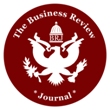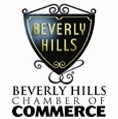|
Venture Capital and Entrepreneurial Finance in
China: A Case Study
Ted Azarmi, Ph.D., California State University,
Long Beach, CA
ABSTRACT
In 1977, Mr. Wu was
employed as the head carpenter for a middle school in Huai Nan, a city with a
population of about one million in Anhui province of China. His monthly salary
was 60 RMB (less than $8 at today's exchange rate). He took care of the school's
needs for furniture such as desks, bookshelves and occasionally made furniture
for the teachers. The following year, Mr. Wu started his own small business.
Initially, it wasn't a brilliant product idea or a new innovation that motivated
him to switch careers from a state-employed worker to a private entrepreneur. It
was simply that Mr. Wu and his wife both were hoping for a better standard of
living for themselves. Mr. Wu set up shop on a sidewalk. He would show up with
his carpentry tools and supplies on the same corner of that sidewalk every day,
take orders for small furniture and make them on the spot. Mrs. Wu took a job as
a tailor to make sure that the family made it through these lean years.
Strategic Decision Making In Today’s Managed Care
Environment
Dr. Jeff Ritter*, President / CEO, Strategic
Consulting, Inc., FL
ABSTRACT
Strategic planning in
health care today has become extremely important. In selecting health care
coverage, consumers see managed care as a double-edge sword. On the one hand,
the cost of a managed care plan is much more appealing than traditional
indemnity plans. One negative impact is losing the freedom of choice in
selecting a particular provider, who many not participate in the network. What
makes this even more complicated, is when business and government mandates or
requires consumers to join a managed care plan. In this era of market based
managed health care delivery, effective communication is more important than
ever before (Root and Stableford, 1999). The article goes on to discuss how this
is even more complex with the Medicare and Medicaid populations. Marketing
refers to attempts to manage behavior by offering reinforcing incentives and/or
consequences in an environment that invites voluntary exchange (Rothschild,
1999). The level of satisfaction is correlated to the ability to select a plan
without coercion. Marketing strategy will play a vital role in healthcare
decision-making. Marketing strategies that involve segmenting, mass
customization, and competitive pricing will come out ahead (Veit, 1999). Brand
loyalty in the Medicare marketplace is what most managed care organizations
strive for. This has become extremely difficult with so many plans leaving the
Medicare market (Health Affairs, 2000) because of reduced reimbursements from
the government. One essential strategy is using multi-channel communications
that include printed materials, public service announcements, seminars and
workshops. Health plans must address long term strategy issues such as entering
and leaving certain markets. There are economic, social, and ethical issues
associated with these decisions.
An Examination of Management Philosophy
Dr. Turan Senguder, Nova Southeastern University,
Ft. Lauderdale, FL
ABSTRACT
What is your personal
management philosophy? The first job of the management is to make a business
perform well. The management takes given resources -- such as manpower, money,
machine and materials -- and orchestrates them into production to accomplish
organizational goals. When employees’ basic human needs go unsatisfied, their
psychological and physical health as well as their productivity suffers. The
participative management meets such needs. Participation in an organizational
development is likely to include problem solving, decision making and goal
setting activities. Employees may participate in any or all of the areas at any
one time. Management should share decision-making authority and responsibility
with its workers. Management should also communicate openly and candidly.
However, this approach may not work well with all employees. Some workers can
take only limited responsibility. They prefer to let others shoulder the main
burden of responsibility. Therefore, management should differentiate talents and
energies of their workers. Each worker is uniquely complex; To help workers
achieve their best performance level, management must understand each worker’s
needs. Needs are what make all of us tick. Workers are motivated to behave in
certain ways because of their need for money, security and status. Work helps to
satisfy a worker’s physical and emotional needs. Weekly paychecks, for example,
enable workers to obtain food, clothes and housing. Besides security, workers
may also seek status through promotion, a merit salary increase, the learning of
new skills, and the invention of a new product.
Measuring Destination Attractiveness: A Proposed
Framework
Dr. Sandro Formica, ESSEC Business School, Paris,
France
ABSTRACT
The driving force of
the tourism industry is represented by the attractions offered by the
destination. Travelers have no reason to visit destinations that have nothing to
offer. Tourism research has demonstrated that attraction studies are necessary
in the understanding of the elements that encourage people to travel. Achieving
the goal of measuring destination attractiveness requires the understanding of
its components and their relationships. There are two ways of examining
attractiveness: by studying the attractions or by exploring the attractiveness
perceptions of those who are attracted by them. As competition among tourism
destinations increases and tourist funding decreases, it is of vital importance
to evaluate the inventory of existing attractions and the perceptions that
travelers have of those attractions. Tourism literature
provides only a limited number of studies addressing destination attractiveness.
The purpose of this study is to explore past studies on destination
attractiveness and propose a procedure for its measurement. The principles of
regional analysis, tourism planning, and tourism attraction research provide the
foundation for such evaluation. The proposed procedure is based on the
assumption that tourism is a system, which is the result of supply and demand
interaction.
Predicting Leaders and Team Leaders in Times of
Great Change
Barbara E. Kovach, Ph.D., Rutgers University, New
Brunswick, N.J.
ABSTRACT
People in
organizations have been experiencing unprecedented change in the last decades,
as a result of competition from domestic and foreign settings and new
technological capabilities. As a consequence, organizations have been seeking
means to heighten their productivity. Two of the most frequently touted results
of this search are a call for leadership and more effective teams. Yet as
psychologists review the literature in the mid- to late-1990s, one after another
comments on the lack of data and/or lack of research over the preceding 30
years. We want people who know how to cope with change, but know little about
them. We want leaders who can live in a changing field, but do not know how to
shape our selection procedures to cull these individuals from the managerial
pool. We want good teams, but know little about who is a good team member and/or
a good team leader. In response to this need and the research literature’s
focus on individual perceptions and expectations as a key to understanding
peoples’ organizational behavior a set of instruments were designed two
decades ago and since tested on over 5,000 individuals
Practical-Theoretical Approach in the Application
of Theory Models of Organizational Behavior
Dr. Robert DeYoung, Saint Thomas University,
Miami, FL
ABSTRACT
This paper discusses
the idea of incorporating a practical-theoretical approach to the application of
theory relevant to the instruction of organizational behavior. In an effort to
move beyond the mere traditional theoretic-based approach of instruction, the
practical-theoretical approach brings to life the concepts, allowing the student
to experience the learning within the controlled confines of academia. The paper
identifies two important components necessary to the practical-theoretical
approach: (1) The identification of a commonality among the students and (2) the
discovery of meaningfulness in the issue being discussed. Commonality refers to
something each student has in common. Meaningfulness refers to anything that is
important to each student. The organizational behavior theories used as an
example in this paper include Bandura’s Model of Organizational Behavior and E.
F. Harrison’s Rational Model of Decision Making. The Model of Organizational
Behavior is used as a foundation throughout the course to establish a clear
understanding of the behavioral dynamics that occur inside the organization. The
practical application of the theory-based Rational Model of Decision-Making
brings to life an understanding of the theory that implicitly applies to the
student. The use of the practicum supports the importance of the
practical-theoretical approach to pedagogy.
Using Organizational Behavior Theories To Manage
Clinical Practice Guideline Implementation
Nancy Borkowski, DBA, St. Thomas University,
Miami, FL
William Allen, PhD, University of Massachusetts
Dartmouth, Dartmouth, MA
ABSTRACT
By building on
sociological and organizational psychology concepts versus reinventing the
wheel, healthcare administrators can develop the right mix of management
strategies to assist in the adoption and implementation of clinical practice
guidelines (CPGs) into their organizations. Physicians control approximately 80
percent of how and where medical services are delivered. Therefore, concerns
over healthcare costs and delivering quality, efficient, and effective medical
care have led to a growing interest in the standardization of and accountability
in health care delivery by altering physicians' practice patterns through the
use of clinical practice guidelines (CPGs). It is estimated that a CPG costs an
organization between $100,000 and $500,000 to develop. As such, there is great
concern as to why CPGs have been remarkably unsuccessful in influencing
physician practice patterns (Greco & Eisenberg, 1993; Kosecoff et al., 1987;
Lomas et al, 1989). The primary reason cited for this lack of success has been
the disproportionately little attention paid to CPGs’ implementation relative to
their development and dissemination (Fang et al., 1996; Mittman et al., 1992).
Understandably so. Implementing a CPG guideline is far more difficult than its
development because implementation requires widespread physician behavior
changes, which is a complex undertaking (Epstein, 1991; Main et al., 1995; Sisk,
1998).
Market Orientation, Organizational Competencies
and Performance: An Empirical Investigation of a Path-Analytic Model
Kamalesh Kumar, Ph.D., The University of
Michigan-Dearborn, MI
ABSTRACT
Results of a survey
of 159 acute care hospitals were used to test examine the specific ways in which
market orientation of an organization contributes to the creation of
organizational competencies that contribute to superior performance. Results
indicated that market orientation makes a significant contribution to the
creation of a number of organizational competencies which in turn lead to
superior performance in the areas of cost containment and success of new
services. Implications for managers were also addressed.
Caribbean and US Shopping Behavior: Contrast and
Convergence
Dr. J. A. F. Nicholls and Dr. Sydney Roslow,
Florida International University Miami, FL
Dr. Lucette B. Comer, Purdue University, Indiana
ABSTRACT
Situational
influences devolve from factors that are pertinent to a particular time and
place and specific to a potential purchase. In this study, patrons of a mall in
the United States are compared with patrons of a mall in Trinidad in respect of
demographic attributes, situational variables, and shopping behavior. There were
wide-ranging differences between the two populations in respect to the
possession of situational variables and purchase behaviors, although the
difference in demographics was limited to a single attribute. Since all 17
situational variables exhibited significant statistical differences, this
suggest that within the United States population situational factors are
operating dissimilarly than for the population in Trinidad. In light of these
findings, alternative ways in which merchants might react to these findings are
suggested.
Intercultural Perceptions of Business and
Management Practices: A German-American Learning Experience
Dr. Josef Neuert, Prof. Achim Opel, University of
Applied Sciences Fulda, Germany
Dr. Dietrich L. Schaupp, West Virginia
University, Morgantown, WV
ABSTRACT
The increasing
globalization of societal and economic activities around the world has generated
much interest in and a need for joint partnerships between international
businesses and educational institutions that teach management education. Of
major interest in business today is how to structure international business
operations in order to gain competitive advantages in international markets. As
more and more companies expand into international markets, it is imperative that
managers become prepared to discharge their duties in a global context. This
paper first examines specific cultural dimensions of influence on international
management. It then describes the West Virginia University – University of
Applied Sciences Fulda joint EMBA program, which was designed to create a
greater awareness and understanding among students for intercultural management
aspects, especially within Germany and the European Union. The discussion of
this program is followed by the outline of the basic research approach of the
joint German-American learning experience. Finally, after describing the design
of the field study some major results and conclusions are presented.
An Ex-Post Investigation of Interest Rate Parity
in Asian Emerging Markets
Todd M. Shank, Ph.D., University of Portland,
Portland, OR
ABSTRACT
Divergent views exist
regarding the question of how interest rate differentials among foreign
countries relate to corresponding exchange rate differentials among those same economies.
Interest rate parity (IRP) theory suggests that if interest rates are higher in
one country than they are in another, the former country's currency will sell at
a discount in the forward market (Van Horne, 1998). In other words, interest
rate differentials and forward-spot exchange rate differentials should offset
one another. If not, opportunities for profit by engaging in covered interest
arbitrage would exist, although profits must be sufficiently large enough to
cover transactions costs and other market frictions.
|





.gif)